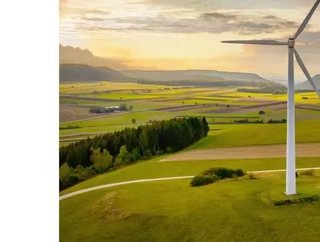Mastering the digital transformation network

We are living through a phase of continuous change – although the transition to renewable energy has begun, its potential and evolution coincides with digitalisation.
Wind is a mature power source, driving innovation. Global sustainability initiatives, like the United Nation’s Sustainable Development Goals are pushing the boundaries for exploration of diversification and elevation of power supplies, leading to drastic transformation in the production, monitoring and delivery of wind energy.
Production equipment costs and power distribution, as well as the rise of techniques like modularisation, help to measure progress in the wind space. The ability to remotely monitor, identify, track and fix equipment demonstrates the link between technology and clean energy.
With maturity in how digital development is merged with sustainability initiatives, optimisation is the crucial next step to achieving universal access to energy. However, digital transformation is still critical to plug numerous gaps.
Critical challenges
For wind to become a viable energy source, the sector must learn from industries that have already harnessed digital innovation, such as automotive and aerospace. To match this progress, the wind sector needs to digitally optimise four critical areas:
- Design
- Testing
- Manufacturing
- and after-market service
All could potentially become more cost and time-efficient, and will impact how effectively a wind power ecosystem is developed, maintained, managed and measured in terms of satisfaction.
Reducing the time taken for physical equipment innovations to reach the market will help in overcoming design challenges. This is compounded by additional hurdles regarding quality, economical manufacture and improved maintainability of components or products.
Digitising testing shortens the trial cycle across entire lifecycles. Manufacturing challenges revolve around required economies of scale, impacting often dispersed supply chains. Delivering quality and reliable products determines whether wind power initiatives are successful.
Finally, considering that implemented projects will reflect the new norm in energy generation, after-sales services are vital and as significant as fulfilling power output demand.
The wind sector is currently at a crossroad. It is mature, but demand is high – not just in terms of volume, but quality. These four critical factors will dictate how wind’s potential can be converted into a truly accessible source for the future.
Transformation is a network
The solutions aren’t simple, and cannot be addressed in isolation. An interconnected network of solutions that work together is a necessity to achieving innovation.
Ushering change relies on technological approaches such as modularity, the use of digital twins and the adoption of digital product lifecycle management (PLM). A single digital thread, which is one common data source, improves decision making, the flow of information and informs product developments through conjoined quality management systems. All four intertwine with three pillars that create efficiency: modularisation, digitalisation and hybridisation. These help organisations speed up development and reduce costs.
Modularisation of product structures offers customers with choice and enables economies of scale across the product lifecycle. Common components for varying turbine designs are utilised, allowing equipment to respond faster to innovations. The repetition effect reduces unit costs and increases quality through reusing sub-solutions across different products to maintain consistent quality.
Digitalisation also helps to cut costs by addressing the connection of all value chain elements to streamline process and accelerate time-to-market. Design and manufacturing are connected, simplifying the process and improving both efficiencies and customer experiences.
The right purchasing model also helps organisations save time and resources - such as switching from CapEx to OpEx. Rather than lavishly spending on maintaining physical components, investing in services that can be scaled up or down as necessity allows greater flexibility.
Updating the industry’s approach to innovation requires a complex network of continuous improvement. The connection between design, testing, manufacturing and after-market service can be concurrent or sequential.
Optimising AI and analytics through a PLM solution to create a digital twin, for testing purposes, ensures the concept and design phases receive continuous feedback and analysis. A single point of data and a digital thread, then, allows decision making to be more accurate, so the digital twin can be leveraged as more than just a lifecycle stage.
The tenets of success
In essence, the wind energy sector cannot move forward with only periodic innovations. Transformation should be an all-encompassing transition in accordance with processes that will stand the test of time, albeit at a much faster speed.
This transformation is goal-oriented with a mature platform. Modularity, digitalisation and hybridisation will be the foundation of industry development over the next decade. They dovetail with the innovation accelerators aimed at creating digital threads.
Wind power’s viability as the optimum portal to achieve universal energy access hinges upon mastering the network of digital transformation.






